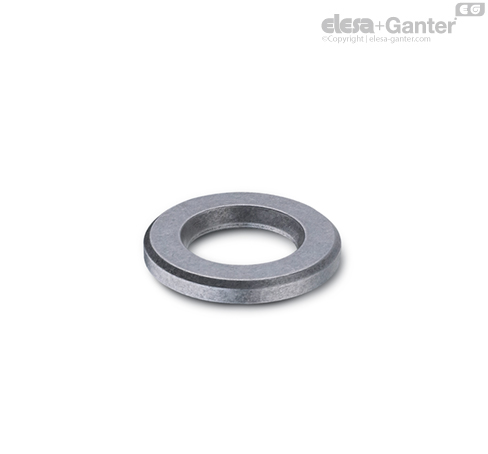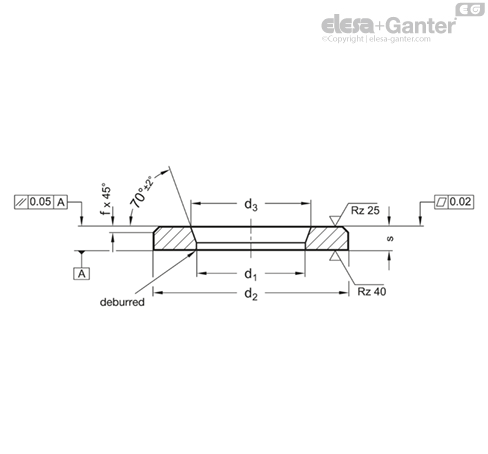Outside diameter d2
The outside diameter d2 of the lower type refers to washers DIN 125 / ISO 7089, and the higher type to washers DIN 7349.
Chamfer face diameter d3
This dimension is, together with the chamfer angle α 70° and the inside diameter d1, the most important dimension of these heavy duty washers. Diameter d3 is actually, even in the lower tolerance range, larger than the max. contact under head diameter on a bolt. This will ensure that the chamfer of d3 of the hardened washer will not be pressed into the underhead radius causing an indentation on the bolt which would damage the bolt.
Inside diameter d1
The inside diameter d1 is kept as small as possible ensuring that the bolt is inserted centrically into the washer. The choice of a matching pair of bolt and washer with least radial clearance is important in order to avoid a mismatch between chamfer diameter d3 and the max. contact area diameter of the bolt head.
Chamfer angle α = 70° ± 2°
This relatively large angle is necessary when using hexagon headed bolts to avoid interference with the chamfer face diameter d3 of the washer
Chamfer edge F
The extended chamfer edge F, as seen from d3, and d1 create an edge that provides the smallest radial clearance towards the transition from bolt shank to head.Even with the minimum chamfer angle of α = 68° and the smallest dimensions for d1 and d3, this radial clearance is sufficient for all bolts according to DIN EN.
Lead height h
This is the height of the cylindrical part of the internal diameter d1, h should be as high as possible in relation to the pitch of the thread of the bolt.
Washer thickness s
Washers GN 6339 are higher when compared with DIN washers (exception: DIN 7439 which is equal to the high type).A larger thickness leads to a stronger washer. As a result, bearing in mind the chamfer d3, a minimum height is established which ensures that the bolt thread will not be damaged when the bolt is tightened.


